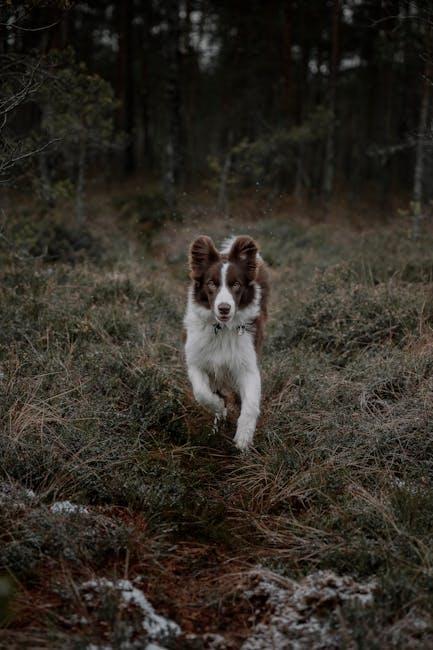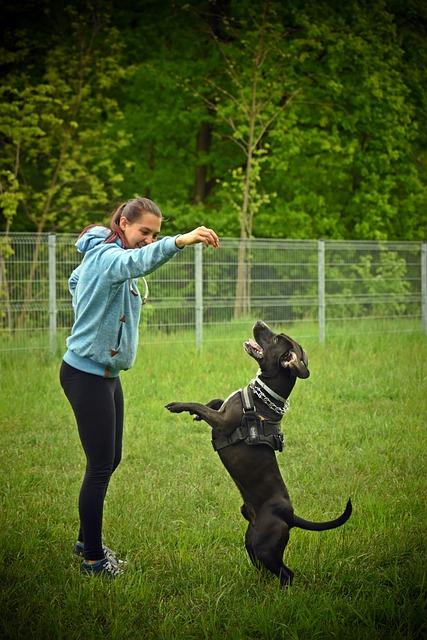Reward-based methods for training a dog to stay indoors

In the realm of canine companionship, few challenges are as relatable as encouraging our furry friends to embrace the indoors. Whether it’s the allure of the great outdoors or the simple excitement of exploration, dogs often find it difficult to resist the call of adventure beyond the threshold. Enter reward-based training methods—a harmonious blend of patience, positivity, and practice. These techniques not only help in reinforcing desired behaviors but also strengthen the bond between pet and owner. As we delve into the world of reward-based strategies, we’ll uncover how treats, praise, and play can transform your living space into a sanctuary that even the most adventurous pup will be reluctant to leave.
Mastering the Art of Indoor Tranquility: A Guide to Reward-Based Training Techniques
Training your dog to stay indoors can be a rewarding journey for both you and your furry friend. By focusing on positive reinforcement, you can cultivate a harmonious indoor environment where your dog feels secure and engaged. Reward-based training emphasizes the use of treats, praise, and affection to encourage desired behaviors. When teaching your dog to stay indoors, consider the following techniques:
- Start with Short Intervals: Gradually increase the time your dog stays indoors by rewarding them for staying calm and relaxed. Begin with brief periods and slowly extend the duration as your dog becomes more comfortable.
- Create a Safe Space: Designate a cozy area with their favorite toys and a comfortable bed. This space should be associated with positive experiences, making it a haven for relaxation.
- Incorporate Interactive Play: Engage your dog with interactive toys or games that stimulate their mind and body. This helps to alleviate boredom and makes staying indoors an enjoyable experience.
By consistently applying these reward-based methods, you will not only reinforce the behavior of staying indoors but also strengthen the bond with your pet. Remember, patience and consistency are key to mastering the art of indoor tranquility.

Understanding Canine Psychology: The Science Behind Positive Reinforcement
At the heart of successful indoor training lies a deep understanding of a dog’s psyche. Positive reinforcement taps into the natural motivations and instincts of our furry friends, transforming learning into an enjoyable and rewarding experience. By focusing on encouragement rather than punishment, we align with a dog’s innate desire to please and be part of the family. This approach not only strengthens the bond between owner and pet but also fosters a sense of trust and security.
- Consistency: Establish a routine for rewarding desired behavior, ensuring that your dog understands the connection between their actions and the rewards they receive.
- Immediate Gratification: Provide treats or praise right after the desired action, reinforcing the behavior effectively.
- Variety of Rewards: Use a mix of treats, toys, and verbal praise to keep the training sessions engaging and stimulating.
- Patience: Understand that each dog learns at its own pace; patience is key to a successful outcome.
By incorporating these techniques, you create an environment where your dog is motivated to learn and thrive indoors. Emphasizing positive reinforcement nurtures a harmonious household where both owner and pet enjoy mutual respect and understanding.

Crafting the Perfect Reward System: Tips for Effective Indoor Training
Creating an effective reward system for indoor dog training involves understanding your dog’s preferences and utilizing them strategically. Consistency is key; rewards should be given immediately after the desired behavior to reinforce the action. This could be a treat, verbal praise, or a favorite toy. Additionally, it’s essential to vary the type of rewards to maintain your dog’s interest and motivation.
- Use high-value treats: Choose treats that your dog finds irresistible, especially during the initial stages of training.
- Incorporate verbal praise: Combine treats with enthusiastic verbal praise to build a positive association.
- Introduce toys as rewards: Use a beloved toy as a reward, especially for dogs that are more play-motivated than food-motivated.
- Gradually reduce rewards: As your dog becomes more consistent, start to slowly decrease the frequency of treats while maintaining verbal praise.
Remember, the goal is to make staying indoors a rewarding experience for your dog, encouraging them to repeat the behavior willingly. By tailoring the reward system to your dog’s unique preferences, you can effectively enhance their training experience.

Building Trust and Consistency: Key Elements for Successful Dog Training
Establishing a strong foundation of trust and consistency is crucial when utilizing reward-based methods for training your dog to stay indoors. Dogs thrive on clear communication and predictable routines, which are essential for successful training. Consistency helps your dog understand what is expected, while trust ensures they feel safe and motivated to learn. To build this foundation, it is important to use positive reinforcement techniques, such as treats, praise, or play, to encourage desired behaviors. These methods not only foster a positive learning environment but also strengthen the bond between you and your furry friend.
Consider incorporating the following elements into your training routine:
- Consistency: Establish a regular schedule for training sessions and adhere to it. This helps your dog anticipate and understand when training will occur.
- Clear Commands: Use simple, consistent commands for each action. This reduces confusion and aids in quicker comprehension.
- Positive Reinforcement: Reward your dog immediately when they exhibit the desired behavior. This reinforces the behavior and increases the likelihood of repetition.
- Patience: Remember that learning takes time. Be patient with your dog and avoid showing frustration, as this can hinder progress.
By focusing on these elements, you’ll create a supportive and effective training environment that encourages your dog to stay indoors willingly and happily.



